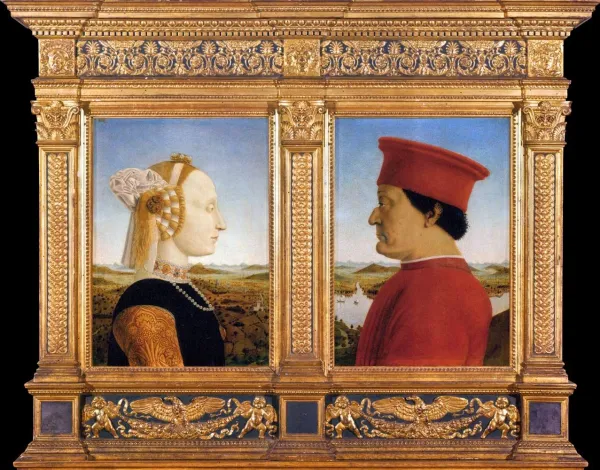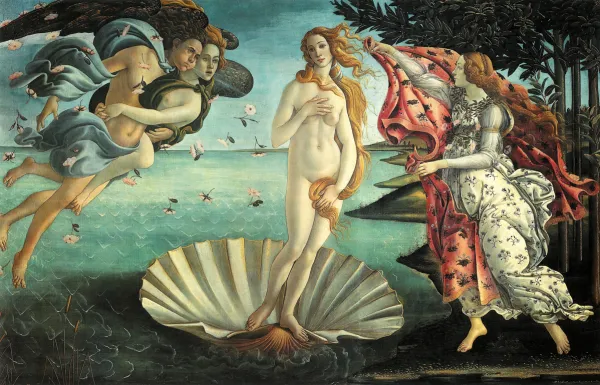The Renaissance period was much more than great art. Its masterpieces and discoveries have gone down in history as some of the greatest creations on earth.
When debating the importance of the Renaissance era, we’re talking about a period in European history between the 14th and 17th centuries. An era that prompted a scientific, political, cultural, and intellectual explosion that changed the world.
Historians agree that this period of history was one of the most profoundly important eras since the fall of the Roman empire. Originating from the 14th century in Florence, Renaissance-era thinking quickly spread throughout Europe, and its ideas may be developed and remain fluid to match local conditions. The thinking at the root of its ideals remained true. Much of the success of the Renaissance period coincided with exploration, trade, diplomatic developments, and the eyes of some experts, more importantly, war.

Similar to how Roman ideals had spread with its empire, conquering armies brought not only regime change throughout Europe but also encouraged a cultural overhaul.
The snowball effect
How Renaissance period thinking spread and influenced the world, could only be described as a snowball effect. Each intellectual advance prompted a fresh way of thinking and even further advancements. Historians agree that the impact of the black death that struck Europe between 1346 and 1353 directly prompted the Renaissance period. The disease killed millions of Europe’s population; it had a tremendous impact on Florence as it was a strategic city. We estimate that the population dropped from 100,000 to 50,000. This created a fertile ground in the city for a cultural revolution.
Because of the dramatic drop in population, survivors were left proportionately wealthier. Labor was in short supply and as a result, the average earnings of traditionally poor classes naturally rose. This left even the traditional upper classes with greater wealth, as those who inherited didn’t have to worry about sharing their wealth. This population shift naturally affected economic circumstances, causing dramatic shifts in supply and demand.
The Medici
Florentine society welcomed what could only be described as a new breed of ruling classes. One of the most famous being the Medici. They and other prominent families in Florence showed a newfound desire to flaunt their wealth. One way that they did this was to become patrons of the arts and science.

Under the patronage of this new wealthy ruling class artists such as Donatello, Raphael, Michelangelo, Botticelli, and Leonardo da Vinci were offered new and exciting opportunities to create some extraordinary works of art. New perspectives on the use of light and shadow were developed.
There was a shift in focus to intellectual disciplines, and this prompted the study of human anatomy. All of this was in response to a growing desire to interpret the world as it really was. Leading figures in the Renaissance era refocused their intellectual ambitions on rediscovering the lost knowledge of classical civilizations; this drive for knowledge pushed the boundaries of society.
The influence of the Renaissance period wasn’t just limited to art. Scientists such as Galileo on Copernicus were encouraged to engage in their own Revolution. They developing unprecedented theories on the location of our planet in the cosmos, even proving that the earth revolved around the sun, and not the other way around.
Philosophy, science, and art combined like never before, prompting an era in which they developed mathematical models. Some of these enabled global navigation, making it safer and easier to discover new countries and continents. This period of exploration also stimulated a new financial system on the back of improved worldwide trade. Another consequence of the Renaissance era was advancement in chemistry, one of the most significant being the understanding of gunpowder.
The rise of radical thinkers
Advances in science and math prompted explorers such as Magellan and Columbus to circumnavigate the globe and discover America. Advances in Renaissance thinking, caused the world as we knew it at the time to shrink. As new countries and continents were discovered, new cultures and lands colonized, Europeans’ understanding and beliefs underwent an intellectual Revolution, this raced across the continent.
The rise of radical thinkers such as Erasmus and Martin Luther forced people to examine the world that they lived in. Question their subservience to the all-powerful Catholic church, causing a schism in the world’s most powerful organization that remains in place today.
The influence of the Renaissance era resulted in an amalgamation of philosophy, science, and art, promoting scientific advances such as the printing press. Gutenburg created the opportunity for ideas to be widely disseminated, to all parts of society and create an enduring legacy that remains today.
The explosion of ideas in the Renaissance period
The invention of the printing press in 1440 allowed the mass production of books. These books would help Renaissance-era ideas spread across Western Europe. A single printing press at the time could create up to 3,600 pages of information every day. This explosion of ideas was unprecedented, and within 60 years over 20 million books had been distributed across Western Europe. Within 150 years that had risen to 200 million books.
Novelists, dramatists, poets, and radical thinkers such as Erasmus and Luther became best sellers. Freethinkers, scientists, and mathematicians were given a door to access the minds of the masses. For the first time in history, science, art, and other disciplines were truly accessible to everyone.
The Renaissance period: let’s put it all together
The seeds that were planted, nurtured, and grown during the Renaissance era prompted humanity to circumnavigate the globe and continue to study the universe. It produced works of art such as Da Vinci’s Mona Lisa and Michelangelo’s David. Books written by Erasmus, Luther, and even the genius of Shakespeare were accessible to the masses, prompting an explosion of literacy and ideas across the continent. Although this was a tumultuous time in the history of Europe, it produced some breathtaking advances.
There is some debate as to the exact timing and impact of the Renaissance period, but few dispute its importance, especially considering the advances it prompted and its influence on changing how many people interpreted and understood the world they lived in. The influence of the Renaissance era changed the world, creating the foundations for the modern Life that we enjoyed today.
If you want to add your personal piece of Italian Renaissance to your home, look for breathtaking Fine Art Photographs at Paolo Modena Photography

